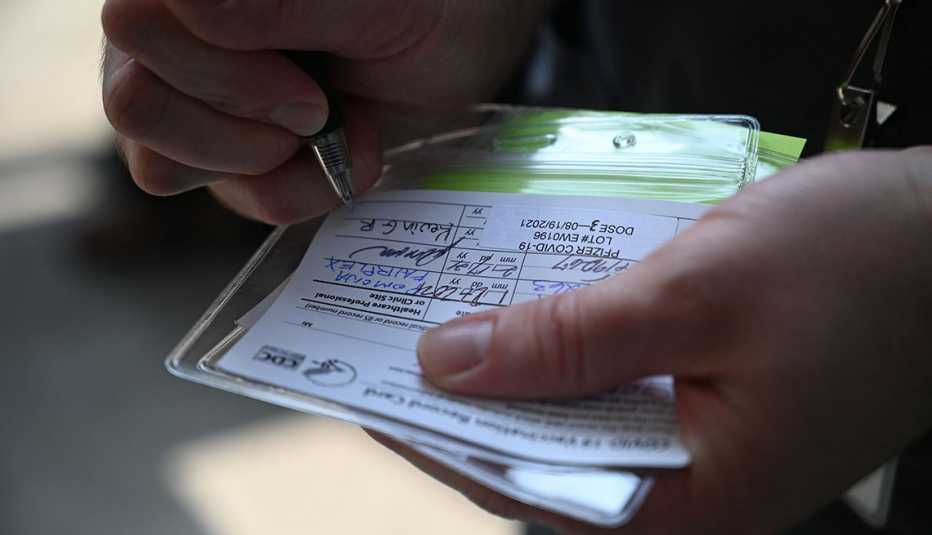Staying Fit


Millions of Americans who have been vaccinated against COVID-19 are eligible for a booster shot, which is meant to wake up the immune system so it stays sharp if confronted with the coronavirus. Experts say the enhanced protection the booster affords is especially needed in the wake of the highly contagious omicron variant, which is driving up cases of infection and illness throughout the country.
Boosters from Pfizer-BioNTech, Moderna and Johnson & Johnson (J&J) are available in pharmacies, health clinics and doctor’s offices across the country. Here’s what you need to know about these additional doses:


AARP Membership— $12 for your first year when you sign up for Automatic Renewal
Get instant access to members-only products and hundreds of discounts, a free second membership, and a subscription to AARP the Magazine.
1. Boosters are available, but not everyone qualifies for one
More than 206 million Americans are fully vaccinated, according to the Centers for Disease Control and Prevention (CDC), but not everybody who is eligible for a COVID vaccine can get a booster shot at this time. Boosters from Moderna and Johnson & Johnson (J&J) are only available for adults 18 and older; people 12 and older who had Pfizer's vaccine are eligible for its booster. Pfizer and Moderna vaccine recipients can get theirs if they are at least five months out from the original vaccine; J&J vaccine recipients qualify for a booster two months after their initial shot.
2. Moderna’s booster is a tad different
The boosters from Pfizer and J&J are the same formulation and dosage as the initial vaccines, but Moderna’s booster is half the dose — 50 micrograms — of the first two shots. Clinical trial data show that the smaller dose still generates a strong immune response, and the company says the lower dose helps to increase worldwide supply.
3. CDC recommends Pfizer and Moderna over J&J
When planning for your booster, know that the CDC now recommends Pfizer and Moderna’s vaccines over J&J’s product. The guidance, issued Dec. 16, 2021, came after a panel of experts that advises the agency reviewed data of a rare but serious blood -clotting disorder linked to J&J’s vaccine. Fifty-four cases of the condition were confirmed as of August out of about 14 million doses administered; nine people have died from it. Young women in their 30s and 40s are most at risk, according to the data presented. The CDC said in a statement that J&J’s vaccine will still be available to those who are “unable or unwilling to receive an mRNA vaccine.”
4. Booster shots enhance protection
While the coronavirus vaccines can help to thwart infection (unvaccinated people are about five times more likely to test positive for COVID-19 than vaccinated individuals, according to data from the CDC), their real strength is preventing serious illness, explains Anna Durbin, M.D., a vaccine and infectious disease expert at Johns Hopkins Bloomberg School of Public Health. And the COVID-19 vaccines are still highly effective at doing just that — they’re keeping people out of the hospital and preventing them from succumbing to the disease. Unvaccinated people are about 14 times more likely to die from the disease than their vaccinated peers, data shows.
That said, multiple studies show that some populations are starting to see protection against disease dwindle, including older adults, who account for the majority of the severe breakthrough infections. And top public health experts have said that the current protection could continue to diminish in the months ahead, “especially among those who are at higher risk or were vaccinated during the earlier phases of the vaccination rollout.”

































































More on Health
What to Know About the Coronavirus Vaccines
Questions continue as millions of Americans get immunized
Where to Get Your Flu Shot
Most major retailers offering both regular and high-dose vaccinesThese Are the 8 Vaccines You Need After 50
Are you up to date on all the recommended vaccines?